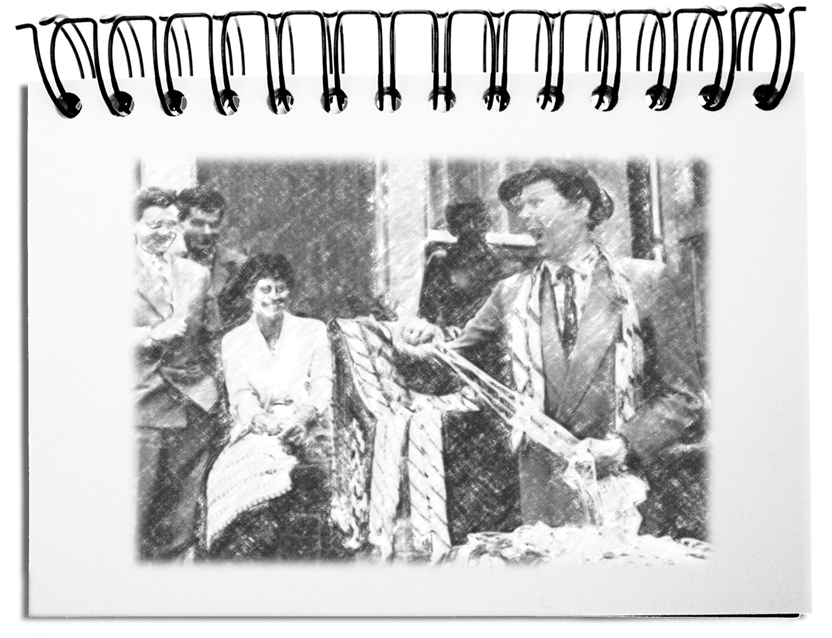Boundaries circle around areas with natural or man-made barriers such as rivers, mountains, turnpikes, fences, or walls. In addition, abstract borders are found in our minds – between ourselves and others, between disciplines, cultures, and miscellaneous ideas. These limits create identity by differentiating commonalities of one group, e.g., language or worldview, from others. Shared values and mutual connectedness convey trust and security. At the same time, the boundaries delineate responsibilities. Within the edged area, tasks, authorities, and responsibilities are clearly described. Eventually, the edges, or rather the assumed delimitations, lie in the eye of the beholder. Everyone set their sphere of influence. To have a consensual boundary, all involved must reveal their understanding and set a common framework.
Whether a boundary is viewed from the in- or outside and is known or accepted, or agreed, it affects in various ways. An area is delimited, enclosed, and ostracized by impassable, uni- and bidirectionally permeable edges.
- Delimiting
Nature separates with the shore the land from the sea, with the river the banks on this side from the other side, and with the mountain one valley from the other. Once humans draw the boundaries, they need a comprehensive description to be interpreted equally by everyone. Sciences are differentiated from one another by diverse jargon. Different intentions, activities, and outcomes distinguish fields of work. The more arbitrary boundaries are drawn, the vaguer interpretations of what does or does not belong to a field are. The distinct area creates clarity. - Enclosing
Setting boundaries establish areas that belong together. Everything and everyone within the area is held together by what they have in common. Here, people speak a coherent language that implies a shared way of thinking, agreed rules are valid, and the inhabitants feel at home. Thus the scope is given, and everything outside this enclosure is the outside world – without distinguishing into additionally delimited areas. Countries, religions, or cultures set broad frameworks to have a lot of elbow space, which means that these enclosures are not perceived as a restriction. - Ostracizing
As soon as an edge is drawn, one has an enclosed area that simultaneously excludes an outside world. This environment consists predominantly of indistinguishable areas perceived as alien, i.e., not belonging to one. The exclusion of the environment strengthens internal cohesion and protects against foreign influences and dangers. Not only nationalism and racism but also silo thinking and area egoisms in companies use fears and generalizations to ostracize the alien and strengthen one’s own identity. - Impassable
North Sentinel Island is a forbidden island, completely isolated from the outside world. A missionary who entered the island was killed as an unwanted. Impassable borders lead to conflicts and a lack of understanding. If there is no exchange with the environment, myths and fake news arise. Japan and China were shut off for centuries from the rest of the world, which led to stagnation that was eventually resolved under pressure from outside. However, this continues to affect the special treatment of foreigners – when responsible professions in Japan (e.g., leading a nursing team) are still not allowed to be exerted by the third generation of immigrants. Globalization has dissolved economic and cultural boundaries. To ostracize, new barriers are raised – administrative and legal regulations and values and behavioral norms are supposed to protect one’s system by creating new, impassable barriers. - Unidirectionally permeable
To strengthen one’s occupation, there is a strong interest in selling the own deliverables to the outside world – without, however, allowing the goods of the environment into the own market. In this way, one’s economy grows at the expense of others. Additionally, national languages and habits create insurmountable hurdles. For example, Japanese and Chinese managers can use their English skills to obtain information abroad. At the same time, most foreigners have little chance of using Japanese or Chinese sources because it is hard to understand the issues even with a lot of learning efforts. Unilaterally permeable borders inhibit Win-Win agreements. - Bidirectionally permeable
Globalization became possible only after borders became permeable in both directions. The mutual access from and to the inside and the outside does not mean that, in addition, agreements and common rules have to be made, and common rules have to be set up. Through agreements, areas are created that are separated from the remaining environment. Here, as with all other distinctions, the common identity must be made. At present, the pendulum is swinging back to nation-statehood, as the effects have been exploited and the global race for resources and market share is now creating drawbacks for some regions – for instance, when the U.S. strives for cheaply manufactured goods on other continents, leaving its labor force empty-handed.
Bottom line: Boundaries determine the scope of laws and rules, value systems, languages, jurisdictions, spheres of influence, etc. Some barriers result from natural circumstances, such as rivers and mountains. Others are artificially established, such as boundaries of nations, belief and value systems, and corporate functions. They all have in common that they delimit, enclose and ostracize, and be impassable, unidirectionally, or mutually permeable. Above all, the artificial boundaries need clear stipulations of where they are, what belongs to them, and what does not. Just as societies can be divided into individuals, families, districts, municipalities, regions, countries, and continents, boundaries can be found in every imaginable size. In everyday life, it is advantageous to understand and use these operating principles of a boundary.


